Pro Warrington Structural/Proximity Bunker Boots
$799.00
Firefighter Boots Leather
Our firefighter boots leather are engineered for elite performance. Constructed from top-grade, fire-resistant leather, these boots deliver exceptional durability, waterproofing, and heat protection. Featuring reinforced steel toes and slip-resistant soles, they ensure safety and stability in extreme conditions. Comfort-driven design with cushioned insoles supports firefighters through demanding missions.
Leather Firefighter Boots: The Complete Guide to Traditional Footwear Performance
When you picture a firefighter’s gear, the classic image often includes sturdy leather firefighter boots—a symbol of both tradition and unwavering protection. These iconic firefighter boots leather designs have protected generations of first responders, combining time-tested materials with evolving safety technology. Whether you’re a new firefighter selecting your first pair of structural firefighting boots or a seasoned veteran appreciating traditional craftsmanship, understanding the unique benefits and considerations of leather firefighting boots is essential for making informed decisions about your protective footwear.
In this comprehensive guide, we’ll explore everything you need to know about leather firefighter boots—from their historical significance and modern safety features to proper maintenance and selection criteria. You’ll discover why these traditional fireman boots continue to hold a respected place in the fire service and how they compare with modern alternatives.
About the Author: Our team includes active firefighters and gear specialists with extensive experience testing traditional and modern footwear in real-world conditions. We’ve evaluated multiple firefighter leather boots models across various operational scenarios and maintain relationships with manufacturers to provide current, accurate information.
The Enduring Legacy of Leather in Firefighting Footwear
A Tradition of Protection
The use of leather firefighter boots dates back to the earliest days of organized firefighting. Before modern synthetic materials, leather was the primary material that offered the necessary combination of durability, water resistance, and thermal protection. What began as practical necessity has evolved into a respected tradition, with many firefighters still preferring leather structural firefighting boots for their proven performance and classic appearance.
Why Leather Remains Relevant
In an era of advanced composites and high-tech materials, leather firefighting boots continue to offer unique advantages:
-
Natural durability that can withstand years of punishing use
-
Breathable comfort that helps manage moisture and temperature
-
Moldable fit that conforms to the wearer’s foot over time
-
Proven performance in extreme heat conditions
-
Repairable construction that extends service life
Types of Leather Firefighter Boots
Structural Firefighting Boots
Traditional leather structural firefighting boots represent the classic fire service footwear:
-
Full-grain leather construction for maximum durability
-
Steel toe and shank protection against impact and penetration
-
Extended height for ankle support and debris protection
-
Heat-resistant soles and materials
-
NFPA 1971 compliance for structural firefighting
Technical Rescue and Wildland Boots
For specialized operations, firefighter boots leather designs have evolved:
-
Lighter weight constructions for mobility
-
Flexible designs for technical movement
-
Specialized outsoles for various terrains
-
Breathable features for extended wear
Station and Parade Boots
Many firefighters maintain separate leather firefighter boots for different purposes:
-
High-gloss finishes for ceremonial events
-
Comfort-focused designs for station wear
-
Traditional styling for public appearances
-
Durable daily wear options
Key Benefits of Leather Firefighter Boots
Superior Durability and Longevity
One of the primary advantages of leather firefighter boots is their exceptional service life:
-
Natural fiber strength that resists tearing and abrasion
-
Repairable construction that allows for multiple resoles
-
Aging characteristics that actually improve with proper care
-
Decade-long service potential with proper maintenance
Thermal Performance and Protection
Leather structural firefighting boots offer unique thermal properties:
-
Natural heat resistance that protects in high-temperature environments
-
Breathable comfort that reduces moisture buildup
-
Gradual heat transfer that provides warning before discomfort
-
Proven performance in direct flame exposure
Comfort and Fit Characteristics
The wearable comfort of firefighter leather boots is legendary:
-
Moldable fit that conforms to individual foot shapes
-
Natural flexibility that moves with the wearer
-
Breathable construction that reduces fatigue
-
Customizable fit through various lacing and fitting techniques
Understanding Safety Standards and NFPA Compliance
NFPA 1971 Requirements
Modern leather structural firefighting boots must meet rigorous standards:
-
Impact resistance testing for toe protection
-
Compression resistance for overall foot protection
-
Puncture resistance for sole protection
-
Heat and flame resistance for thermal protection
-
Electrical hazard protection for shock prevention
-
Whole boot flexibility and durability requirements
Maintaining Compliance
Ensuring your leather firefighting boots remain compliant:
-
Regular inspection for damage or wear
-
Proper maintenance to preserve protective qualities
-
Timely repair of any compromised areas
-
Replacement when standards can no longer be met
-
Review current [NFPA safety standards] for complete compliance requirements.
Selecting the Right Leather Firefighter Boots
Assessment of Your Needs
Choosing the perfect firefighter boots leather model involves several considerations:
Operational Requirements:
-
Primary response type (structural, wildland, technical)
-
Department specifications and requirements
-
Climate conditions in your response area
-
Call volume and usage intensity
Personal Preferences:
-
Fit and comfort priorities
-
Weight and mobility requirements
-
Maintenance willingness and capability
-
Budget considerations and department allowances
The Complete Sizing Guide
Getting the right fit is crucial with leather firefighter boots:
Proper Measurement Approach:
-
Measure both feet at the end of your shift
-
Wear your duty socks during fitting
-
Consider any orthotics you regularly use
-
Account for normal foot swelling during long shifts
Fit Evaluation Checklist:
-
Adequate toe room (about one thumb’s width)
-
Secure heel fit without slippage
-
No pressure points or tight areas
-
Comfort through full range of motion
-
Proper arch support and alignment
-
Use our boot fitting guide] for detailed measurement instructions.
Leather vs. Modern Materials: An Objective Comparison
Understanding the Trade-offs
How leather firefighter boots compare to modern alternatives:
| Feature | Leather Firefighter Boots | Modern Composite Boots |
|---|---|---|
| Durability | Excellent long-term with proper care | Good, but may show wear differently |
| Weight | Typically heavier | Generally lighter |
| Break-in Period | Longer initial break-in | Shorter adaptation period |
| Maintenance | Regular conditioning required | Easier cleaning typically |
| Repairability | Often can be resoled and refurbished | Limited repair options typically |
| Traditional Appeal | High heritage value | Modern functional appearance |
Proper Maintenance and Care for Leather Boots
Regular Maintenance Protocol
Keeping your leather firefighter boots in optimal condition requires consistent care:
After Each Use:
-
Remove insoles and allow to air dry naturally
-
Brush off surface debris and soot
-
Wipe with damp cloth to remove contaminants
-
Stuff with newspaper to maintain shape and absorb moisture
Weekly Maintenance:
-
Deep clean with leather-safe products
-
Condition with quality leather treatments
-
Inspect stitching and seams for damage
-
Check sole wear and overall condition
Specialized Leather Care Techniques
Proper care for firefighter leather boots involves specific approaches:
Cleaning Methods:
-
Saddle soap for general cleaning
-
Specialized leather cleaners for tough contaminants
-
Gentle brushing to remove embedded debris
-
Proper drying away from direct heat sources
Conditioning and Preservation:
-
Regular conditioning to maintain suppleness
-
Waterproofing treatments for wet weather protection
-
Seam sealing to maintain water resistance
-
Storage practices that prevent drying and cracking
The Break-in Process: Setting Realistic Expectations
Understanding the Leather Break-in Journey
New leather firefighter boots require a proper break-in period:
Typical Timeframe:
-
2-4 weeks of regular wear for full comfort
-
Gradual improvement in fit and flexibility
-
Multiple wear sessions of increasing duration
-
Progressive comfort as leather molds to your feet
Effective Break-in Strategies:
-
Wear around the station during light duties
-
Use your regular duty socks during break-in
-
Flex and bend the boots during wear
-
Address pressure points with appropriate techniques
Cost Analysis and Investment Value
Understanding the Financial Commitment
Leather firefighter boots represent a significant investment:
Initial Cost Range:
-
Structural models: $350-$600
-
Technical and wildland versions: $250-$450
-
Custom and premium options: $500-$800+
Long-term Value Considerations:
-
Extended service life with proper care
-
Resoling and repair options that extend usability
-
Department reimbursement possibilities
-
Investment in comfort and protection
Popular Leather Fire Boot Brands and Models
Established Traditional Manufacturers
Several companies have built reputations for quality leather firefighter boots:
Heritage Brands:
-
Warrington traditional designs
-
Ranger classic fire boots
-
Servus leather compositions
-
Various custom bootmakers
Modern Traditionalists:
-
Brands combining traditional materials with updated designs
-
Improved comfort features in leather constructions
-
Updated safety standards in classic designs
-
Enhanced performance characteristics
Frequently Asked Questions (FAQ)
Q1: How long does it take to break in leather firefighter boots properly?
The break-in period for leather firefighter boots typically takes 2-4 weeks of regular wear. Unlike modern synthetic materials, quality leather requires time to mold to your specific foot shape. We recommend wearing new boots during light station duties initially, gradually increasing wear time. The break-in process can’t be rushed without risking damage to the leather or discomfort to your feet.
Q2: Are leather firefighter boots heavier than modern composite boots?
Yes, traditional leather structural firefighting boots are generally heavier than modern composite alternatives. The natural density of leather, combined with traditional construction methods, typically results in more weight. However, many firefighters find the weight provides a sense of stability and protection, and the comfort improves significantly once broken in properly.
Q3: How do I waterproof my leather firefighter boots?
Waterproofing leather firefighting boots involves regular application of quality leather conditioners and specific waterproofing products. Start with clean, dry boots, apply conditioner evenly, then use a dedicated leather waterproofing treatment. Pay special attention to seams and stitching. Reapply waterproofing regularly based on your frequency of use and exposure to moisture.
Q4: Can leather firefighter boots be resoled when worn out?
Yes, one of the significant advantages of quality leather firefighter boots is that they can often be resoled multiple times, significantly extending their service life. Look for boots with Goodyear welts or other resoleable constructions. Professional cobblers experienced with fire service footwear can typically replace outsoles while preserving the leather uppers.
Q5: How do leather boots perform in extreme heat compared to modern materials?
Leather firefighter boots have proven performance in extreme heat conditions, with natural leather providing excellent thermal insulation and resistance to direct flame exposure. While modern materials have improved significantly, many experienced firefighters appreciate leather’s predictable performance characteristics and the warning time it provides before heat transfer becomes uncomfortable.
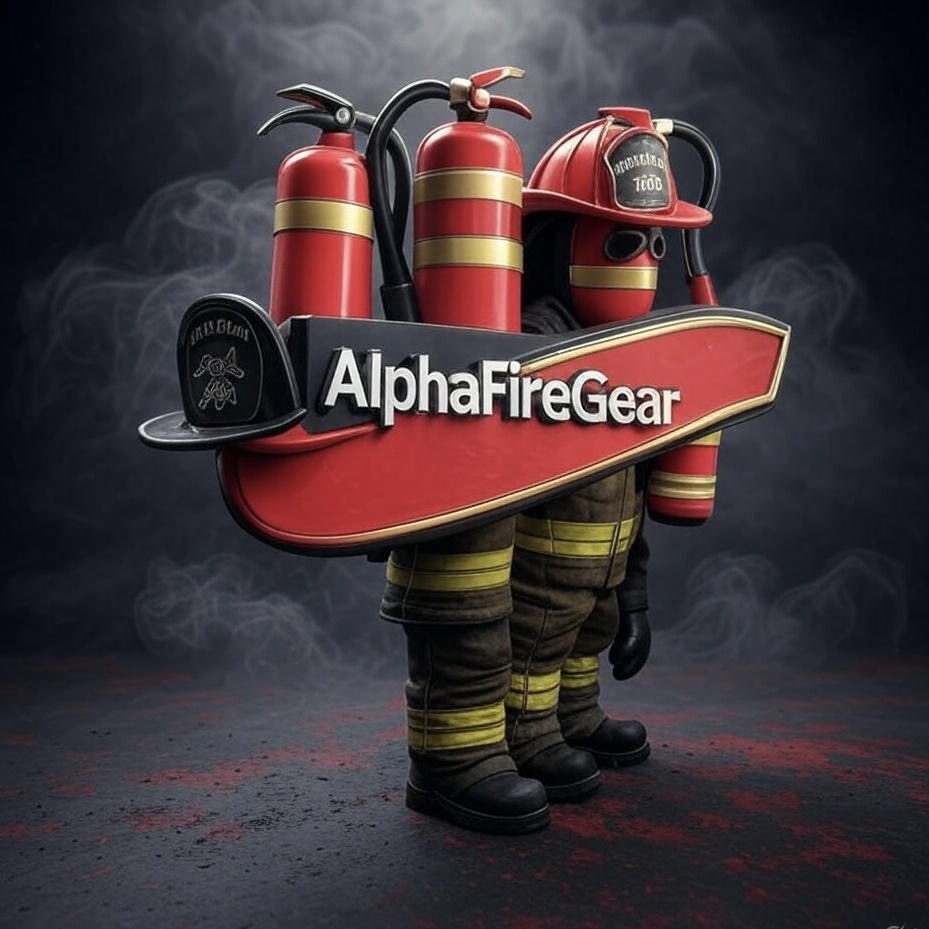
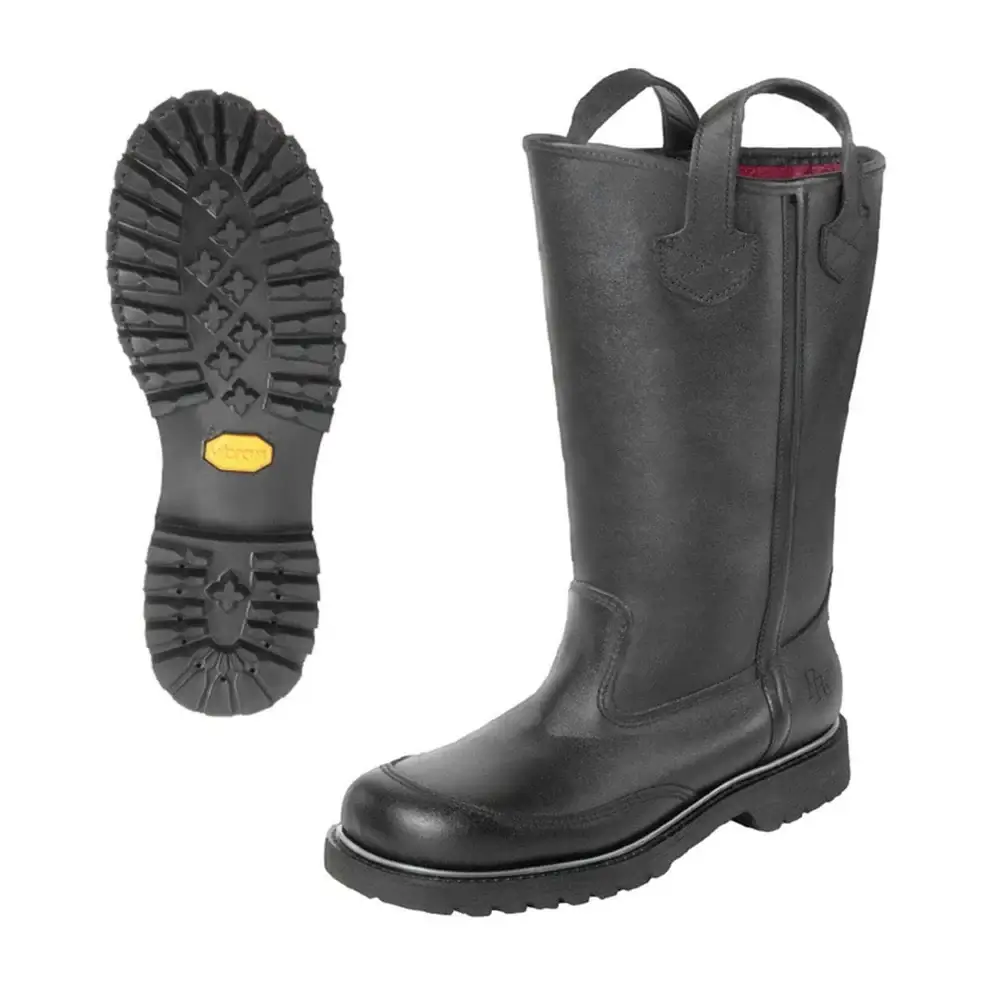
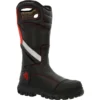
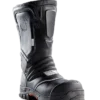
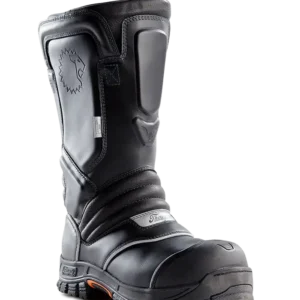
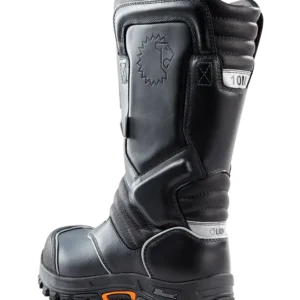
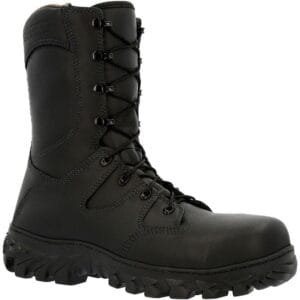
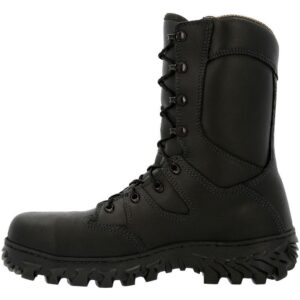
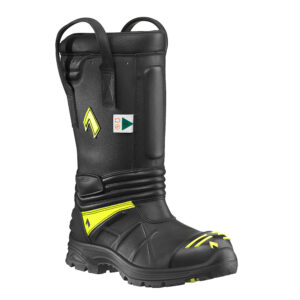
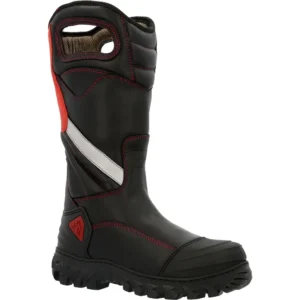
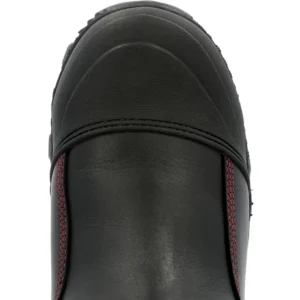
Reviews
There are no reviews yet.